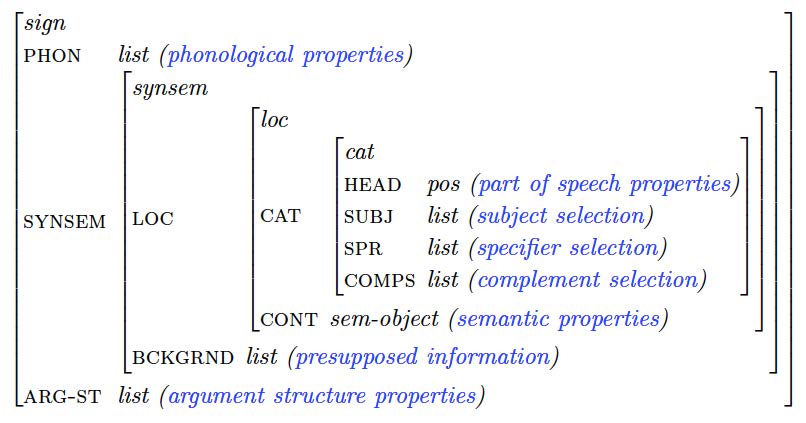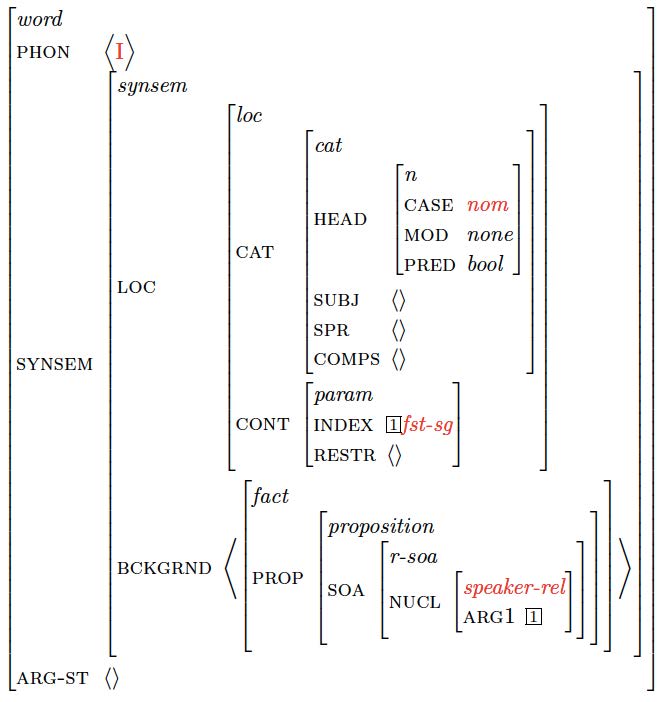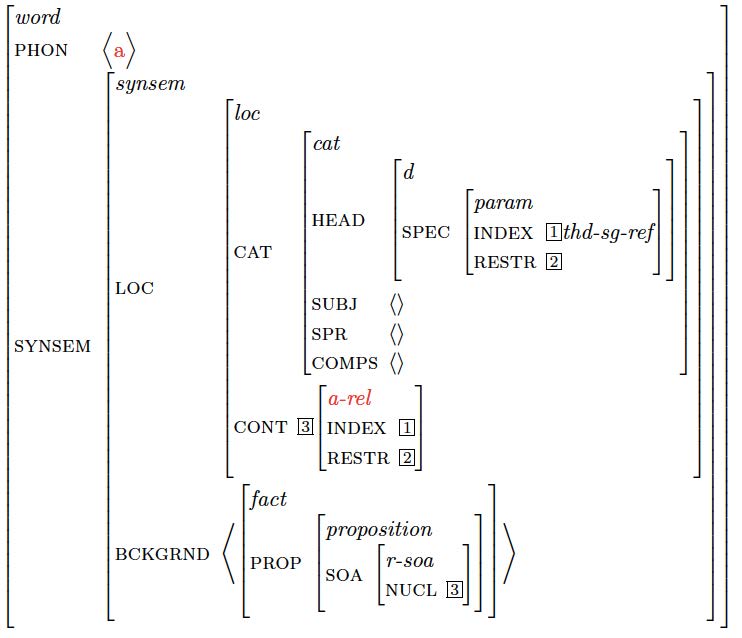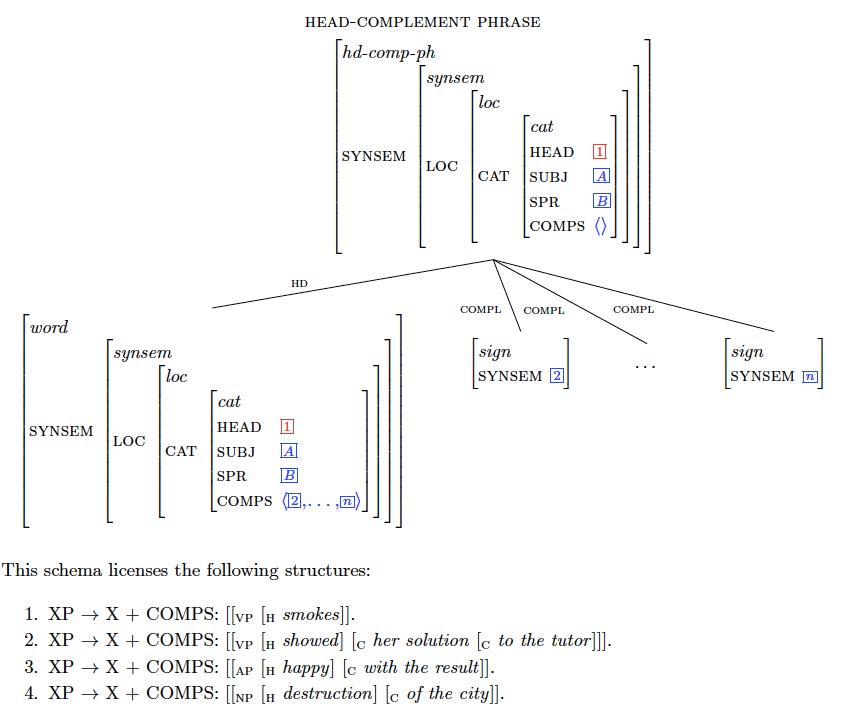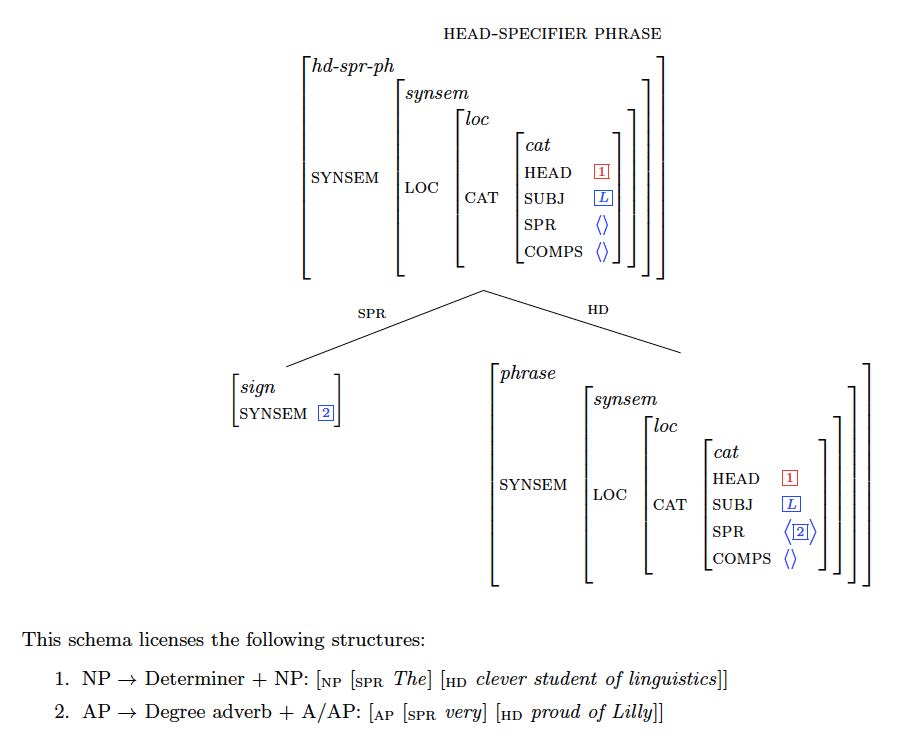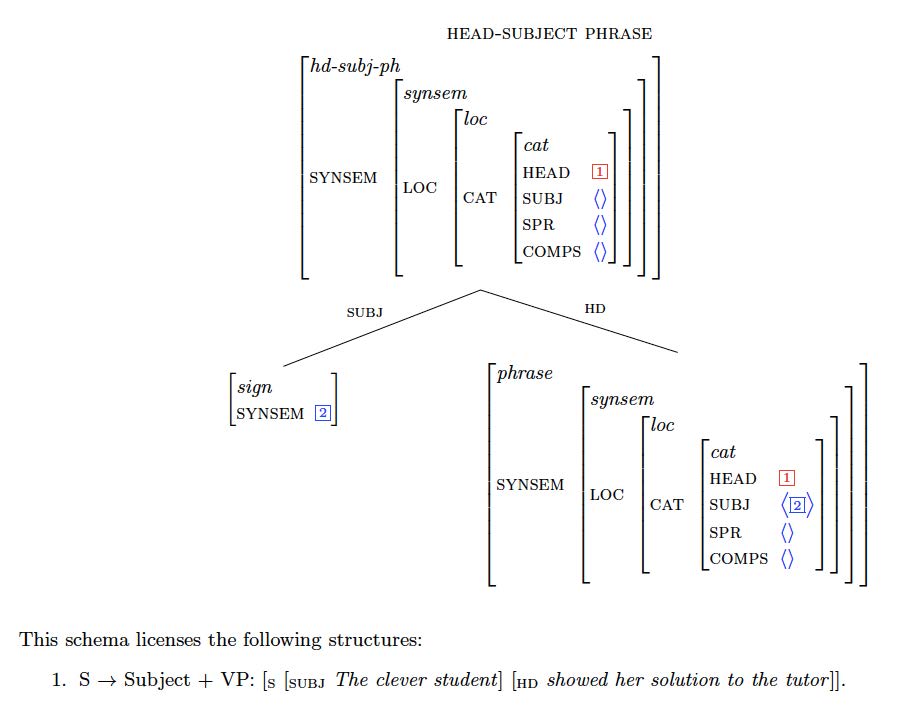Constraint-based Syntax 2: Week 1: Difference between revisions
No edit summary |
|||
| (15 intermediate revisions by the same user not shown) | |||
| Line 38: | Line 38: | ||
[[File:GS-hd-comp-ph.jpg]] | [[File:GS-hd-comp-ph.jpg]] | ||
===== Head-Specifier Phrases ===== | ===== Head-Specifier Phrases ===== | ||
| Line 61: | Line 60: | ||
<br> | <br> | ||
<br> | <br> | ||
Navigation: | |||
<div align="center"> | <div align="center"> | ||
[[ | [[Constraint-based_Syntax_2| '''Main page''']] '''Week 1''' [[Constraint-based_Syntax_2:_Week_2| '''Week 2''']] [[Constraint-based_Syntax_2:_Week_3| '''Week 3''']] [[Constraint-based_Syntax_2:_Week_4| '''Week 4''']] [[Constraint-based_Syntax_2:_Week_5| '''Week 5''']] Week6 Week7 Week8 Week9 Week10 | ||
</div> | </div> | ||
</font> | </font> | ||
Latest revision as of 10:03, 16 May 2017
New Feature Geometry
The geometry of the feature structures of Ginzburg and Sag (from here on simply GS) differs slightly from that of Pollard and Sag (1994). Here is the general structure of a sign:
We find the following differences from the earlier feature geometry:
- Instead of a SUBCAT list, there is now an ARG-ST. Only signs of type word have this list-valued attribute. Like SUBCAT, it contains all the syntactic arguments of a word. Unlike SUBCAT, this list is not used for head-driven phrase formation, however! It is used, among others, for the Binding Theory.
- As part of the category information of the sign, we now find the 3 valence attributes SUBJ, SPR, and COMPS. Together with combinatorial schemas, they drive phrase formation from the information in the head daughter. They have the following properties:
- SUBJ: the list contains 0-1 synsem objects
- SPR: the list contains 0-1 synsem object
- Comps: the list contains 0-3 synsem objects
Some Words in the New Feature Geometry
The word I:
The word a:
Phrases
Unlike Pollard and Sag (1994), GS give subtypes to the type phrase which reflect the functional relationship between the head daughter and the non-head daughter(s). The following phrase types exist:
Head-Complement Phrases
A Head-Complement Phrase is formed from a word and one phrase for each of the synsems on the head's COMPS list. There has to be a 1:1 relation between the selected synsems and the phrases:
Head-Specifier Phrases
In a Head-Specifier Phrase a head combines with a phrase whose synsem is token-identical to the synsem on the head's SPR list:
Head-Subject Phrases
In a Head-Subject Phrase a head combines with a phrase whose synsem is token-identical to the synsem on the head's SUBJ list:
Note that unlike in Pollard and Sag (1994), subjects of verbs combine with the head in a Head-Subject Phrase, whereas determiners combine with the nominal they specify in a Head-Specifier Phrase!
Homework for next time
- Read p. 17-38 in GS (ignore the section on lexemes at the beginning!
- Study the type definitions in these pages and make sure you understand them!
Navigation:
